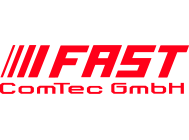Application Note and Selection Chart for Time-Of-Flight Mass Spectrometry
Discussion:
FAST ComTec is developing and manufacturing ultra fast multistop all digital time digitizers. FAST ComTec also represents the transientrecorder. Both type of instruments offer an exceptionally large mass-range for use in Time-of-Flight mass-spectrometry.
There are a variety of different instruments on the market that are based on other methods. They usually offer excellent time resolution but very limited multistop capabilities and mass-range - because the analog circuitry used causes significant dead time after every stop and is limited in dynamic range. Furthermore analog circuitry is prone to drift with temperature and time.
We will therefore look at transientrecorders and single ion counting techniques only.
Most applications do normally not allow a choice between either approach - the ionization method used dictates which system should be used for optimum results..
In general a model like the P7888 or MCS6A is the choice where each sweep sees one or fewer than one ion per time bin down to one ion per several sweeps. The number of individual ionic species detected per sweep should be smaller than one single particle to choose counting techniques. The P788x and MCS6A Series instruments will process recorded ions only and enable therefore a very high sweep repetition rate. Noise is suppressed by setting the threshold of the discriminator used above the noise level. The discriminator looks at rising or falling edges only (depending on model used) and records pulses that sum in one time bin no matter how wide an input pulse the detector actually generates.
Using a P788x or MCS6A in mass spectrometry employing strong laser ionization is not recommended because the MCP detector generates a current output and can not separate single ions as would be required for ion counting.
A transientrecorder is the choice when laser ionization is used. The large number of ions generated by the laser generate a current output in the MCP detector that is proportional to the numbers of ions detected.
However, using a transientrecorder where few ions are generated is not recommended because the system would mainly sum noise and as the actual pulseform is digitized wide pulses tend to broaden the summed mass-lines.
The Features of the MCS6A Series Instruments:
- 100 ps - 800 ps time-resolution
- 1 - 5 input channels
- 10 GHz max. pulse edge evaluation rate with 100 ps resolution
- 64 bit dynamic range (32ns to 20 days programmable range with 100ps
- No dead time between time bins
- No double counting
- Large on-board FIFO
- Up to five operating modes such as: rising edge evaluation, falling edge evaluation, evaluation of both edges (pulse-width), continuous, and stop after sweep, etc.
- Sync-out for triggering of external devices
- Ultra high sweep repetition rates
- USB module design using fast FPGA's (Gate Arrays) and state-of-the-art logic IC's

